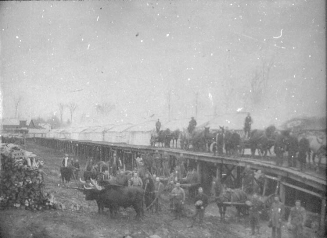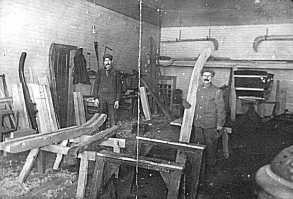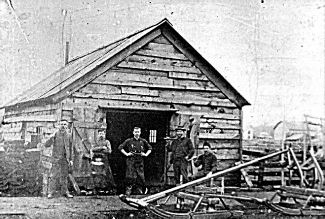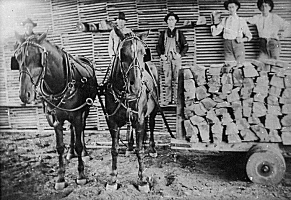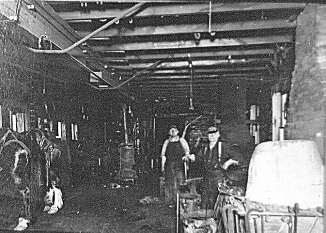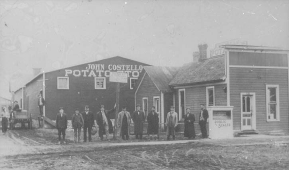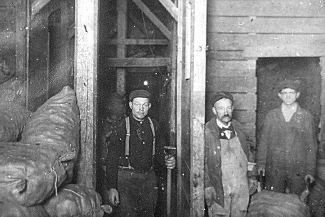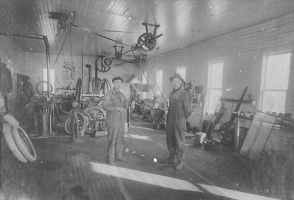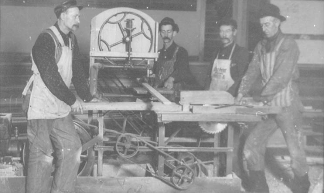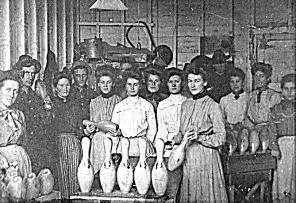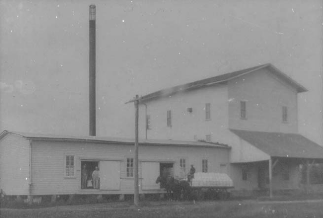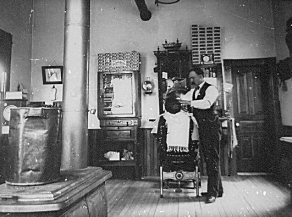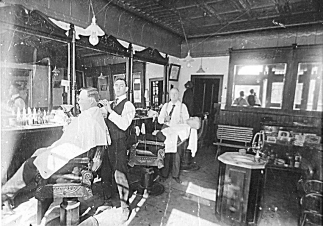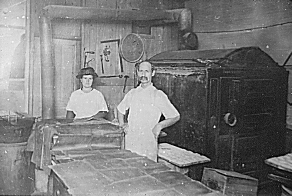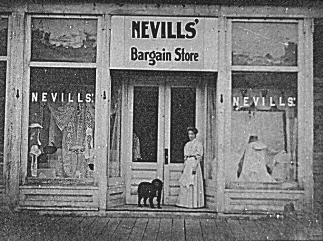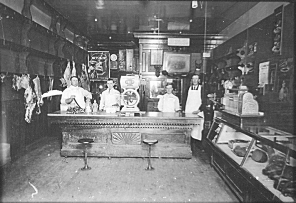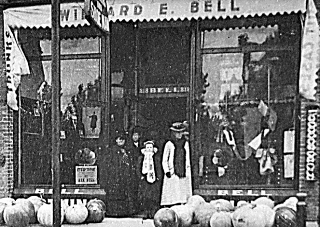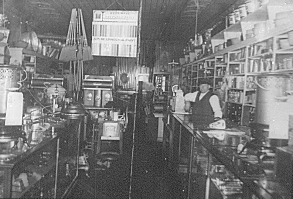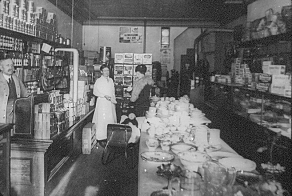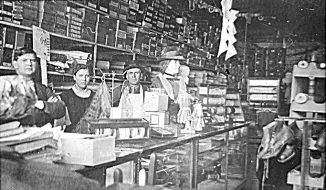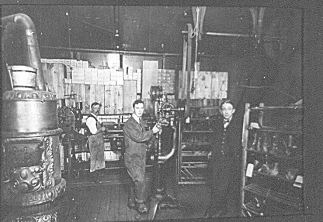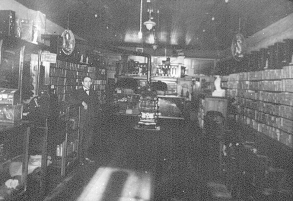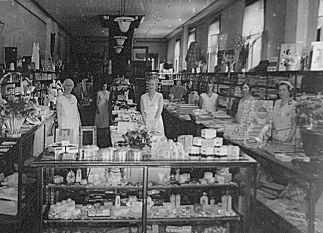|
Early Business Slides 91 – 113 Along with the growth and development of lumbering, there were a number of related industries. |
|
|
1. Just north of Gaylord along the railroad tracks there was an operation that produced charcoal. Here we see the kilns, men, horses, and oxen used in the manufacture of that product. Actually these were two such places and they operated around 1895. |
|
|
|
2. Transportation in the winter required the use of sleighs. Consequently, there were a number of places where sleighs were repaired and actually made. One usually found such a place in connection with the local blacksmith shops. |
|
3. This was the John Brodie Shop which stood where Schreur’s Garage now stands. |
|
|
|
4. Another important use of lumber in Gaylord's early history was in the making of barrels. The Jackson Wylie Stave Mill, with James Hazard as manager, produced the staves and hoops needed in their manufacture. The plant employed about 25 men. |
|
5. Years ago blacksmith shops were as numerous as garages are today. The Widrig Shop, a father son operation, not only kept the horses properly shod, but the machines and equipment used in the woods, on the farm, and in business in good repair. |
|
|
|
6. For years the main agricultural crop was potatoes. Here we see one of the several warehouses in which they were stored until sent to market. |
|
7. The growing, harvesting, handling, and storage provided employment for a great many. |
|
|
|
8. Believe it or not, this is Gaylord's first garage. It was owned and operated by Charles Hilton and his assistant. It is quite different from the modern garages we are now familiar with. |
|
9. Some of the very
first portable power tools were used in the construction of Gaylord's
old |
|
|
|
10. A great deal of the hardwood cut in Otsego County was used in the production of bowling pins which were made right here in Gaylord. As you can see, a number of women worked to varnish and finish them. |
|
11. The first grist
mill was erected in 1882. In a mill such as this the local farmers
had their grain ground into flour and feed for their livestock. In
all. Gaylord's Grist Mill had several owners. The last was David
Piehl so it is remembered as Piehl's Grist Mill. It was located on
|
|
|
|
12. How would you like to make an appointment to have a tooth pulled in a place like this? What looks like it might be an early barber shop is actually the local dentist. |
|
13. This, however,
is the local barber shop. Lew Qua and |
|
|
|
14. For many years
Grant's Bakery operated on |
|
15. Neville's Bargain Store was considered "The" place to have ones millinery needs taken care of. It stood on one of the lots now occupied by the Gaylord State Bank. |
|
|
|
16. Also, in approximately the same area, was the Allen Schreur Meat Market. Notice how completely different it is from the meat counter in a modern supermarket. Meat usually hung on the wall and the butcher cut the precise piece of meat the customer ordered. |
|
17. These large pumpkins were sold at the Willard E. Bell's Grocery Store. |
|
|
|
18. The local general store in those early days was a conglomeration of just about everything. This and the next two slides show interiors of three stores. |
|
|
|
|
19. This shoe repair shop operated in the rear of Guggisberg's Store. It mended the boots and shoes of the lumberjacks as well as those of the men and women, children of the community. |
|
|
|
20. The original Guggisberg Store was owned and operated by four brothers: Leon, John, Harold, and Carl. |
|
21. Frank Kramer,
Gaylord's first clothing merchant, came from |
|
